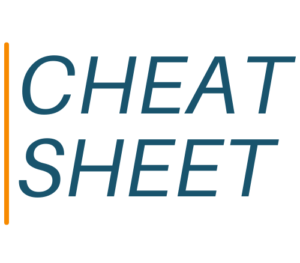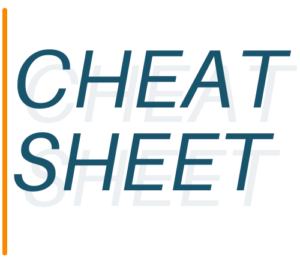
Reporters Who Cover AI in Search
You need to be logged in to view this content. Please Log In. Not a Member? Join Us

You need to be logged in to view this content. Please Log In. Not a Member? Join Us

Here’s a cheat sheet on whom to approach and pitch in selected Tier 1 event operations, updated from the Jan. 2024 version. Unlike reporters, event influencers have no content to review.

Below are 23 reporters known to cover funding news. The idea behind this cheat sheet is to capture the core group. To do this, we sometimes had to include more than one reporter per publication.

This grid contains the latest intel on who might place your contributed post. It stays updated in great measure thanks to our kind subscribers, who keep us alerted to shifts and changes.

Here’s a baker’s dozen’s worth of podcasts focused on customer success. Included are podcasts from Forrester and vendor Intercom — those may not be overly pitchable. The rest probably are.

A subscriber recently asked for a POV on where the low-hanging fruit was in the world of AI coverage. As subjective as that might be, it’s still worth trying. Who might you suggest?

Watch and listen as SWMS contributing editor David Strom discusses with Sam Whitmore his analytics experiences at CSO Online and elsewhere. Hear why analytics are both useless and valuable, and be ready to jump on the one thing all passionate PR pros should do upon completing this breezy, under-ten-minute video podcast.

Here’s a cheat sheet with ten authors of cybersecurity newsletters on Substack. All are men, and few are Americans.
How many fintech reporters operate out of Washington, DC? This cheat sheet captures ten, across big titles and trades alike. If you happen to know

Here’s an updated cheat sheet with 11 Substack newsletters focused on AI. The selection comprises a combo of analysis-driven work from experts, and newsletters that blend original work with ICYMI links to “AI news of the week.”
YOUR ACCOUNT
FRIDGE NOTES
Indy media business experts Brian Morrissey and Jacob Cohen Donnelly have built two very successful businesses with both newsletters and face-to-face events. Axios has noticed this and has decided to get into the event space focusing on the economics of publishing, which of course is a topic close to home. Announced this week: an Axios event coming up in September. Hosts: Sara Fischer and Kerry Flynn.
ServiceNow has launched a special report on Fortune to jumpstart strategic spending on AI, illustrating workarounds for implementation problems, and otherwise illuminating the path to integrating AI into software operations. This is a branding exercise, of course, and perhaps is a sign that earned media is just not going get a strategic job done.
AIQ shows a big idea and how to leverage the prestige of Fortune without having to pitch stories to accomplish that same objective: you can just buy shelf space. In the case of AIQ, Fortune hired freelancer Sage Lazzaro — who used to work on staff there to create high-level content. So let’s keep an eye on this project, monitoring how well-respected it is… and whether its content gets surfaced in search engines.
Here are the details — Choose from 5 categories and 30+ subcategories. The awards are being promoted by Bhava Communications, an SWMS subscriber.
The guy also is the full-time “chairman” of Bally and Sassoon. On top of that, he’s also chairman of Foundry and 13 other companies. Well, 14, if you count his own private equity firm. How much time will he put into TC, understanding the subtleties of tech edit?
Julie opens up to host Dave Reddy.. it’s a good listen. BVM is a SWMS subscriber.